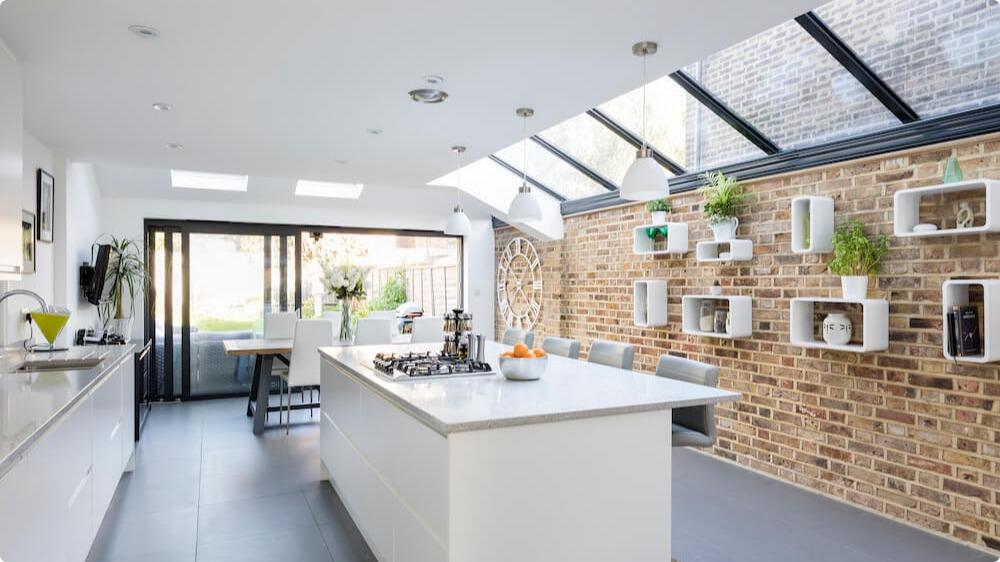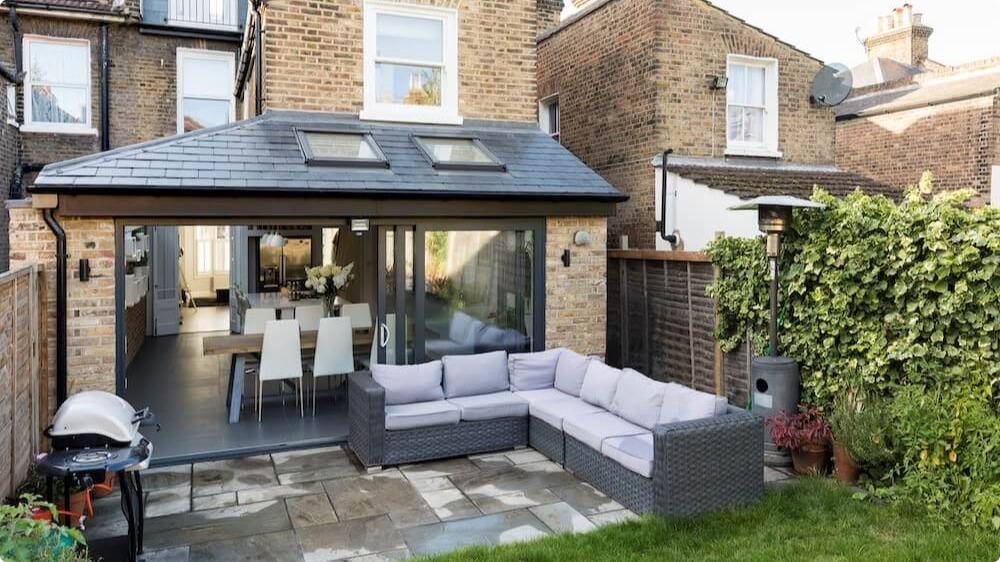When it comes to extending the rear of your property, you have two classic options: rear and side. But what if you could combine the two?
This is what’s known as a single storey wraparound extension, and it’s a popular choice for homeowners looking to gain as much rear space as possible, without eating up too much of their garden.
Let’s take a closer look at this corner-defying design...
What is a wraparound?
A wraparound is traditionally seen on period properties that have alleyway space to the back of their property. This dead space, common on Victorian buildings, allows you to extend to both the side and to the back, creating an L shape that wraps around existing space.
Why choose one?
Unlike classic rear extensions, you don’t have to sacrifice as much green space to get bags more room - ideal if you live in densely packed areas, such as London. It also uses up the dead space in your home’s side alleyway, space that’s often wasted. Why not get it working harder?
Other advantages of a single storey wraparound extension:
- Opens up your kitchen area
- Allows space for new rooms, such as playrooms, WCs, or a utility room
- Brings more light into your home
- Allows better connection to the garden
- Plenty of design options
Of course, this kind of extension is only open to households who have the required side space.
How much do they cost?
The price of constructing a 45 sqm single storey wraparound extension will roughly be...
- £75,000 to £145,000 in London.
- £60,000 to £120,00 outside of London.
However, this will vary massively depending on...
- Materials used. Some materials are more expensive to build with than others, due to their quality and how easy they are to get hold of.
- Contractors. Individual contractors are cheaper, but can be slower without the access to additional resources and strong business relationships that you would likely get with a larger construction company. However, this additional knowledge, manpower and experience comes at a cost.
- Structural work. More structural work for your project will further increase the construction budget.
- Location. Construction fees will vary on where you are in the UK. London prices are higher than other areas of the UK, with parts of the North and Wales being generally cheapest.
Get a tailored construction estimate with our construction calculator tool.
On top of this construction estimate you will need to pay:
- 20% VAT.
- Glazing, kitchens, bathrooms and any other key fit-out items.
- Architectural fees, which for a traditional architect will be between 5% to 15% of construction costs, depending on whether you bring them in to project manage too. At Resi, prices are tailored to each project. Learn more on our website.
- Other professionals’ fees, like structural engineers and CCTV drainage surveyors who will be required when obtaining building regulations approval. At least one party wall surveyor may also be required if you encounter a party wall dispute with a neighbour. Click here to learn more.
- Your local authority charges small fees for planning applications and building regulations approval.
- We also recommend investing in insurance and warranty for big projects like wraparound extensions. Learn more about your options here.
Due to all these factors going into the cost of your budget, we recommend getting an estimate tailored to your project. Try our quick quote tool online for an estimate in minutes, or talk about your project with our professionals for free in one of our cosultations. Book yours here.
Permitted development rights or planning permission?
When combining a side and rear extension to form a ‘wraparound’, the permitted development restrictions will be judged against the criteria for both extensions individually, making it unlikely for the project to fall under your permitted development rights.
For instance, side extensions are only permitted development where they are less than half the width of the original dwelling, but the combination of a side and rear extension will likely exceed half the width of the original. Therefore, you should prepare yourself to make a full planning application.
The best way to protect yourself from refusal at this stage is to hire an architect to both design and submit your project for planning. A good architect will have extensive experience of planning policy, meaning they can steer you away from the common mistakes that derail applications. What’s more, with an architect working as your planning agent, they’ll be able to make any quick changes to your design, should the council suggest these are needed to get approval first time round.
Planning applications can take 8 weeks for a decision to be made, so factor this into your timeline. However, once you’ve got planning approval it lasts up to 3 years, and can even be sold with your home, giving a boost to your house price without even the need for construction.
Wraparound extension designed by Resi

When this developer came to Resi, they were keen to expand this Victorian period property, in order to get maximum returns from the future sale. However, we did such a good job, that the client actually decided to live there himself! Showing no one can resist good design. Starting out, the client wanted to expand the rear of his property, and create a large kitchen/dining area that could be used by the family, along with a sociable environment for friends to visit and be entertained. In order to achieve this, we decided to create a wraparound extension, one that expands the space from both the rear and the side.

Because we wanted this new space to feel as open as possible, we worked alongside a structural engineer to help us design a room that wouldn’t be broken up by any columns. To achieve this, we used recessed steelwork to give clean lines, with a hidden crank beam nestled into the structural party wall. To avoid any conflict with neighbours, we advised our client on party wall matters, sparing them any legal headaches.

As a beautiful period property, our client was keen to retain some of the natural charm of the building, while also having those flashes of a modern touch. For that added WOW factor, we went with creating a glazed roof. Though more expensive than traditional skylights, it really helped to open up the space and bring that all important light in throughout. And for that classic touch? We created an exposed brick wall, made from London stock bricks. A homage to the home’s history in the capital.
Lastly, to tie everything together with the home’s fantastic outdoor space, we added large sliding glass doors. Allowing any occupant to move seamlessly from kitchen to garden, especially in those summer months. And with so many wonderful features, is it any wonder this developer couldn’t bear to part with this home?
Discover your home's potential by booking a free consultation with our team.
























